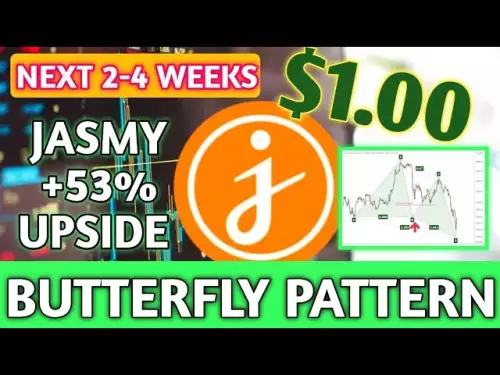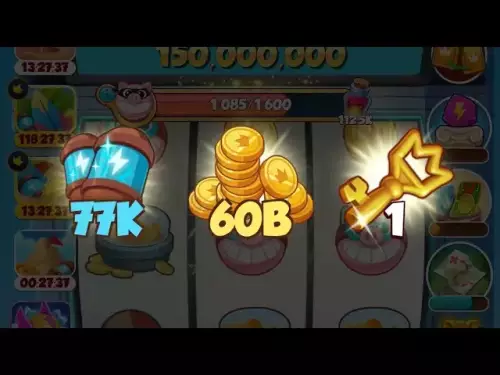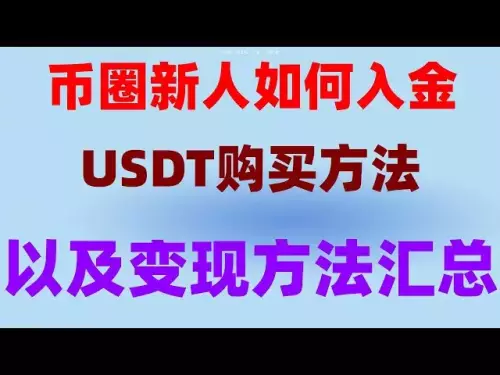-
 Bitcoin
Bitcoin $109500
-2.65% -
 Ethereum
Ethereum $4367
-7.16% -
 XRP
XRP $2.866
-4.11% -
 Tether USDt
Tether USDt $1.001
0.08% -
 BNB
BNB $834.2
-3.96% -
 Solana
Solana $186.7
-8.35% -
 USDC
USDC $0.9998
0.00% -
 TRON
TRON $0.3407
-4.70% -
 Dogecoin
Dogecoin $0.2086
-8.02% -
 Cardano
Cardano $0.8338
-6.54% -
 Chainlink
Chainlink $23.32
-8.27% -
 Hyperliquid
Hyperliquid $42.61
-6.17% -
 Ethena USDe
Ethena USDe $1.001
0.04% -
 Stellar
Stellar $0.3846
-4.40% -
 Sui
Sui $3.346
-7.20% -
 Bitcoin Cash
Bitcoin Cash $542.2
-6.29% -
 Avalanche
Avalanche $23.25
-8.12% -
 Hedera
Hedera $0.2314
-5.09% -
 UNUS SED LEO
UNUS SED LEO $9.576
-0.02% -
 Litecoin
Litecoin $109.6
-5.50% -
 Toncoin
Toncoin $3.120
-4.62% -
 Shiba Inu
Shiba Inu $0.00001198
-6.25% -
 Uniswap
Uniswap $9.635
-10.26% -
 Polkadot
Polkadot $3.731
-7.97% -
 Dai
Dai $1.000
-0.01% -
 Cronos
Cronos $0.1536
-1.37% -
 Bitget Token
Bitget Token $4.465
-3.57% -
 Monero
Monero $263.8
-3.16% -
 Aave
Aave $316.1
-8.24% -
 Ethena
Ethena $0.6228
-8.35%
What is a good crypto AVL indicator trading strategy?
The AVL Indicator tracks volume flow to confirm trends and spot reversals in crypto markets, helping traders anticipate price moves before they happen.
Aug 06, 2025 at 06:22 am
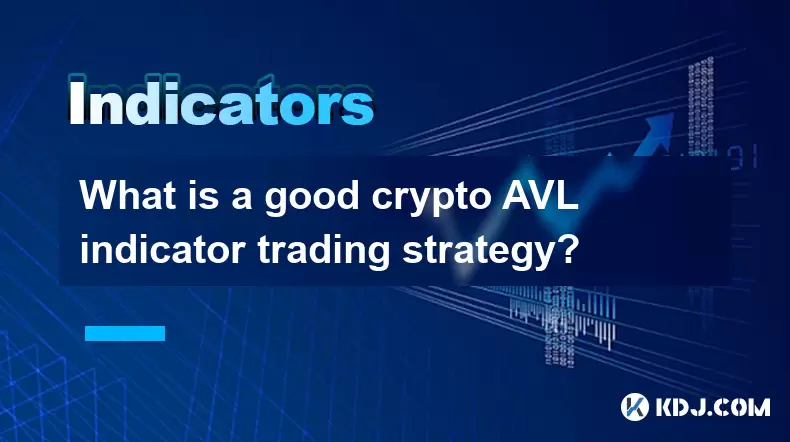
Understanding the AVL Indicator in Cryptocurrency Trading
The AVL Indicator, also known as the Accumulation Volume Line, is a technical analysis tool used to measure the cumulative flow of trading volume in relation to price movements. In the cryptocurrency market, where volatility and volume shifts are frequent, the AVL Indicator helps traders identify potential trend reversals, confirm price trends, and assess the strength behind price moves. The core principle of the AVL Indicator is that volume often precedes price, meaning significant volume changes can signal upcoming price changes before they appear on price charts.
The AVL Indicator is calculated by adding the day's volume to a running total when the closing price is higher than the previous close (indicating accumulation), and subtracting the day's volume when the closing price is lower (indicating distribution). This creates a line that moves upward during periods of accumulation and downward during distribution. When analyzing cryptocurrencies like Bitcoin or Ethereum, traders watch for divergences between the AVL line and price action—such as when price makes a new high but the AVL does not—as potential early warnings of trend exhaustion.
Setting Up the AVL Indicator on Trading Platforms
To apply the AVL Indicator effectively, traders must first set it up correctly on their preferred trading platform. Most major platforms like TradingView, MetaTrader 4/5, or Binance's advanced charting tools support the AVL or a similar volume-based indicator. Here’s how to add it:
- Open the chart of the desired cryptocurrency pair (e.g., BTC/USDT).
- Click on the "Indicators" button, usually located at the top of the chart interface.
- Search for “Accumulation Volume Line” or “AVL” in the indicator library.
- Select the indicator and apply it to the chart.
- Adjust settings if needed, though the default parameters typically require no changes.
Once applied, the AVL Indicator appears as a separate line below or alongside the price chart. It’s crucial to ensure the volume data is accurate, especially when trading on exchanges with potential volume manipulation. Using reputable exchanges with high liquidity such as Binance, Coinbase Pro, or Kraken ensures the AVL reflects genuine market activity.
Identifying Bullish and Bearish Signals with AVL
The AVL Indicator generates actionable signals when interpreted in context with price behavior. A key signal occurs during positive divergence, where the price reaches a new low but the AVL line forms a higher low. This suggests that despite falling prices, selling pressure is weakening, and buyers may soon take control. Conversely, a negative divergence happens when price hits a new high but the AVL fails to surpass its previous peak, indicating weakening buying momentum and a potential reversal.
Additional signals include:
- A rising AVL line during an uptrend confirms bullish sentiment.
- A declining AVL line in a downtrend supports bearish continuation.
- Sudden spikes in the AVL line may indicate institutional or whale activity.
Traders should cross-verify AVL signals with other tools such as moving averages or RSI to reduce false positives. For instance, a positive divergence on the AVL combined with an oversold RSI reading on a 4-hour chart of Ethereum could present a high-probability long entry.
Combining AVL with Moving Averages for Confirmation
Using the AVL Indicator in isolation can lead to misleading signals, especially in choppy or sideways cryptocurrency markets. To enhance reliability, traders often combine it with moving averages (MA). A common approach is to overlay a 50-period and 200-period Exponential Moving Average (EMA) on the price chart and use the AVL line to confirm trend strength.
For example:
- When the price is above both the 50 EMA and 200 EMA, and the AVL line is trending upward, it reinforces a bullish outlook.
- If the price crosses below the 50 EMA but the AVL continues rising, it may suggest hidden strength and a potential pullback rather than a full reversal.
- A bearish crossover of the 50 EMA below the 200 EMA (death cross) accompanied by a falling AVL line increases confidence in a downtrend.
This combination helps filter out noise and improves timing for entries and exits. On a 1-day chart of Solana, such a confluence could highlight a major trend shift that might not be apparent from price alone.
Executing Trades Based on AVL Crossovers and Breakouts
A robust AVL-based trading strategy includes clear entry, stop-loss, and take-profit rules. One effective method involves monitoring AVL crossovers with its own moving average. Traders can apply a 10-period SMA directly on the AVL line to create a signal line.
Trade execution steps:
- Enter a long position when the AVL line crosses above its 10-period SMA and the price is in an uptrend.
- Place a stop-loss just below the recent swing low to manage risk.
- Set a take-profit level at a known resistance area or use a trailing stop.
- Enter a short position when the AVL line crosses below its SMA in a confirmed downtrend.
For example, on the 6-hour chart of Cardano, if the AVL crosses above its SMA while price breaks above a key resistance level, this dual confirmation increases the probability of a sustained upward move. Volume expansion during the breakout further validates the signal.
Risk Management and Position Sizing with AVL Strategies
Even with a reliable indicator like AVL, risk management remains essential. Cryptocurrency markets are prone to sudden swings, and overleveraging can erase gains quickly. Traders should limit risk per trade to 1–2% of their total capital. For a $10,000 account, this means risking no more than $100–$200 per trade.
Position size calculation:
- Determine the distance between entry and stop-loss in dollars.
- Divide the risk amount (e.g., $150) by this distance to get the number of units to buy.
- Adjust for leverage if trading futures, but avoid excessive margin.
Using AVL to monitor exit points is equally important. If the AVL line begins to flatten or decline while in a long position, it may be time to tighten the stop-loss or take partial profits, even if the price hasn’t hit the target yet.
Frequently Asked Questions
Can the AVL Indicator be used on all cryptocurrency timeframes?
Yes, the AVL Indicator works across all timeframes—from 1-minute scalping charts to weekly swing trading views. However, signals on higher timeframes (4-hour, daily) tend to be more reliable due to reduced noise and stronger volume confirmation.
How does the AVL differ from the On-Balance Volume (OBV) indicator?
While both track volume flow, the AVL Indicator specifically emphasizes accumulation and distribution phases by adjusting volume based on closing price direction. OBV adds volume on up closes and subtracts on down closes without the same emphasis on accumulation logic, making AVL slightly more nuanced in trend confirmation.
Is the AVL Indicator effective during low-volume periods?
During low-volume periods, the AVL Indicator may produce weak or delayed signals. It performs best in high-liquidity environments. Traders should avoid acting on AVL crossovers during weekends or holiday lulls when crypto markets often see reduced activity.
Can I automate trading strategies using the AVL Indicator?
Yes, platforms like TradingView allow Pine Script coding to create alerts or automated strategies based on AVL crossovers or divergences. However, fully automated bots require backtesting and should include additional filters to avoid overtrading in sideways markets.
Disclaimer:info@kdj.com
The information provided is not trading advice. kdj.com does not assume any responsibility for any investments made based on the information provided in this article. Cryptocurrencies are highly volatile and it is highly recommended that you invest with caution after thorough research!
If you believe that the content used on this website infringes your copyright, please contact us immediately (info@kdj.com) and we will delete it promptly.
- Heritage Distilling's Token Deal: A Bold Balance Sheet Strategy
- 2025-08-26 06:45:14
- Coinbase Hack, Solana Shenanigans, and Wallet Woes: What's a Crypto OG to Do?
- 2025-08-26 06:45:14
- Bitcoin, Institutional Adoption, and Volatility: A 2025 Perspective
- 2025-08-26 08:05:14
- MAGACOIN, Ethereum, and XRP Growth: What's the Buzz?
- 2025-08-26 08:30:13
- ETHZilla's Bold Moves: Share Buyback and Ethereum Holdings Under Scrutiny
- 2025-08-26 08:05:14
- Cardano, ADA Price, and the ETH L2 Meme Coin Frenzy: What's Next?
- 2025-08-26 08:50:13
Related knowledge
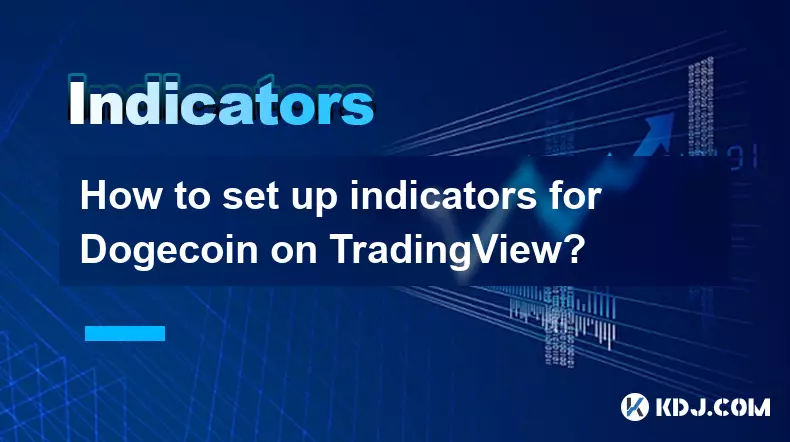
How to set up indicators for Dogecoin on TradingView?
Aug 25,2025 at 04:23pm
Understanding Dogecoin and TradingView1. Dogecoin, initially created as a meme-based cryptocurrency, has evolved into a widely traded digital asset. I...

What does it mean when the +DI and -DI cross frequently in the DMI indicator but the ADX is flattening?
Aug 11,2025 at 03:15am
Understanding the DMI Indicator ComponentsThe Directional Movement Index (DMI) is a technical analysis tool composed of three lines: the +DI (Positive...

What does the sudden appearance of a "dark cloud cover" candlestick pattern during an uptrend indicate?
Aug 13,2025 at 11:35am
Understanding the 'Dark Cloud Cover' Candlestick PatternThe dark cloud cover is a bearish reversal pattern in technical analysis that typically appear...

What does it mean when the moving average, MACD, and RSI all send buy signals simultaneously?
Aug 11,2025 at 01:42pm
Understanding the Convergence of Technical IndicatorsWhen the moving average, MACD, and RSI all generate buy signals at the same time, traders interpr...

What does it mean when both the KDJ indicator and the RSI show overbought signals simultaneously?
Aug 13,2025 at 11:35am
Understanding the KDJ Indicator in Cryptocurrency TradingThe KDJ indicator is a momentum oscillator derived from the Stochastic Oscillator, widely use...

What does it mean when the price is trading above the SAR indicator but the red dots are densely packed?
Aug 09,2025 at 11:49pm
Understanding the SAR Indicator and Its Visual SignalsThe SAR (Parabolic Stop and Reverse) indicator is a technical analysis tool used primarily to de...

How to set up indicators for Dogecoin on TradingView?
Aug 25,2025 at 04:23pm
Understanding Dogecoin and TradingView1. Dogecoin, initially created as a meme-based cryptocurrency, has evolved into a widely traded digital asset. I...

What does it mean when the +DI and -DI cross frequently in the DMI indicator but the ADX is flattening?
Aug 11,2025 at 03:15am
Understanding the DMI Indicator ComponentsThe Directional Movement Index (DMI) is a technical analysis tool composed of three lines: the +DI (Positive...

What does the sudden appearance of a "dark cloud cover" candlestick pattern during an uptrend indicate?
Aug 13,2025 at 11:35am
Understanding the 'Dark Cloud Cover' Candlestick PatternThe dark cloud cover is a bearish reversal pattern in technical analysis that typically appear...

What does it mean when the moving average, MACD, and RSI all send buy signals simultaneously?
Aug 11,2025 at 01:42pm
Understanding the Convergence of Technical IndicatorsWhen the moving average, MACD, and RSI all generate buy signals at the same time, traders interpr...

What does it mean when both the KDJ indicator and the RSI show overbought signals simultaneously?
Aug 13,2025 at 11:35am
Understanding the KDJ Indicator in Cryptocurrency TradingThe KDJ indicator is a momentum oscillator derived from the Stochastic Oscillator, widely use...

What does it mean when the price is trading above the SAR indicator but the red dots are densely packed?
Aug 09,2025 at 11:49pm
Understanding the SAR Indicator and Its Visual SignalsThe SAR (Parabolic Stop and Reverse) indicator is a technical analysis tool used primarily to de...
See all articles





















